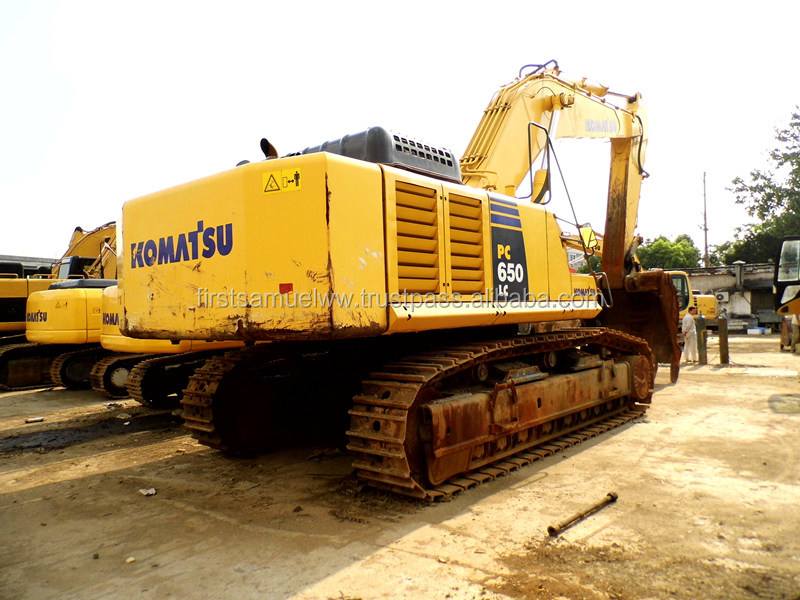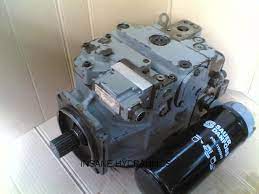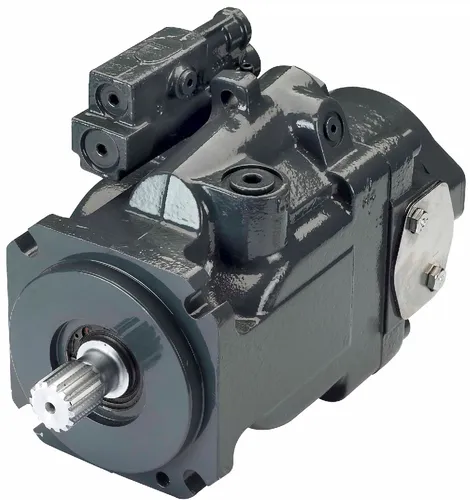komatsu excavator pc200lc-6le how do i change the epc valve
The Komatsu PC200 LC-6LE Track-Type Mini Excavator is a hydraulic excavator with a hydraulic motor which obtains required power from the tracks themselves and it has a few different hydraulic components like an engine, pumps, valves, foldable stacker crane and etc. Now at times the engine might get damaged or the control valve might get stuck but if you are aware of what to look for while you are checking it then you can just change that specific part and see if it can work. If there is another fault still then you might have to completely replace the machine.
komatsu excavator pc200lc-6le-The Komatsu PC200LC-6LE is a specialized version specifically designed for use in trenching and shoring applications.
The PC200LC-6LE can be configured with a standard hydraulic hoist, or it can also be equipped with a powered grade kit. The powered grade kit includes a 6-ton capacity boom, a 24-volt electric motor and an electric winch.
The PC200LC-6LE has two primary functions: trenching and shoring. The machine’s innovative design allows workers to work in trenches of up to 7 feet in diameter, which is an industry-wide standard for trenching and shoring.
The increased trenching width also allows workers to work from the side of the trench rather than from the top surface of the ground. This reduces other forms of excavation equipment exposure, such as exposure to high winds and difficult working conditions, allowing for safer overall work conditions for workers.

komatsu excavator pc200lc-6le-Out of the box, the PC200LC-6LE comes with a boom, as well as additional hardware, including a shoring adapter with two stakes, a shovel, and all necessary attachment points.
The PC200LC-6LE is equipped with a boom that provides an additional 26 feet of reach, along with a shoring adapter. The boom itself can be stowed and set up in less than 15 minutes, and the shoring adapter can be fitted between the ripper’s lower frame and the blade. This allows the excavator to dig trenches while supporting the soil with a 4-foot aluminum wall system.
The PC200LC-6LE has a tier III engine that is rated at 125 horsepower (HP). The hydraulics for the boom have been modified to deliver twice as much power to other hydraulic circuits.
“It’s a real workhorse,” says John Nehrbass, product support manager for Komatsu. “It will do almost anything.”

komatsu excavator pc200lc-6le-For our purposes, we will be changing the epc valve on this unit.
For our purposes, we will be changing the epc valve on this unit. The valve shown is from a top-load washer but the procedure is very similar to most front load washers. To begin, disconnect power and water from your washer.
Remove the screws around the top of the front panel (they may be hidden by covers). Remove the front panel.
Pull up and out on the door switch assembly to remove it from the machine frame. You will not be able to access it with the door open unless you unplug it or remove its wires from the wiring harness in order to lay it flat inside the machine frame.
You should now have access to what’s called a “clamshell” style control panel housing that contains all of your electronic components, and you should see the entire control board along with other components like relays and pressure switches. The epc valve is located just behind where your control panel used to be.
komatsu excavator pc200lc-6le-Due to the unique design of this unit and its purpose, the valve is located within the excavator―not on top of it.
The body of an excavator is a large machine that’s designed to dig trenches, load and unload trucks, move material, and carry heavy loads. It’s not lightweight or small enough to be powered by batteries, so it needs something else to get the job done―a power source built into its design.
The excavator’s engine is what powers the machine. An engine is a mechanical device that converts the energy provided by an outside source (usually fossil fuels) into the kinetic energy required to move itself and work. In this case, that means turning pistons inside cylinders to run the machine.
Power can come from two places: electricity and hydraulics. Most excavators have both in order to be used in a variety of capacities.
Electricity comes from a motor attached to the chassis of the excavator―a mechanism that allows it to move up and down, turn right or left, back up after dumping waste into a trench, and so on. The motor also powers other components like lights, pumps, and sensors.
Hydraulics are typically found on smaller machines that aren’t equipped with motors for moving themselves. A hydraulic unit can lift or drop heavy loads or allow a vehicle to tilt left or right without the need for much friction.
komatsu excavator pc200lc-6le-To change the valve, you will need a HF950II hydraulic hand pump to remove the valve cover.
If you’re working on a small engine, chances are good that you’ll encounter an oil-bath thermostat. The valve cover adapter on the thermostat normally has three o-rings; the two outer o-rings are used to seal the assembly, while the middle o-ring is sealed by a threaded ring to prevent leakage.
The middle o-ring is usually sealed by a metal valve cover gasket, which is used to seal the threads on the thermostat adapter. However, if your engine won’t start when you try to put it back together and you discover that this gasket—the one that seals the thermostat’s middle o-ring—has come off, you need to replace it immediately.
To do this, you’ll need a hydraulic hand pump to remove the valve cover for cleaning purposes. If your engine won’t start because of fuel starvation due to low fuel pressure in the fuel system, you’ll also need an accurate gauge for measuring fuel pressure. You’ll have to be careful not to damage or distort any components when using this hand pump.
komatsu excavator pc200lc-6le-Inspect your unit for any damage to the paint before performing this task.
Inspect your unit for any damage to the paint before performing this task. This will help you identify any areas that may need to be primed and painted after the rust has been removed.
Use a stiff wire brush to remove loose dirt, rust and paint from the area where you’re working. Do not use a wire brush on a car that has been repainted, unless you’re sure the new paint is compatible with the old paint and you don’t care if it’s removed. A wire brush may damage new paint and cause it to peel or discolor.



